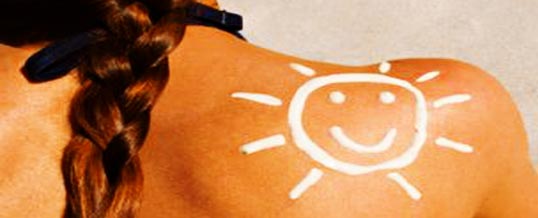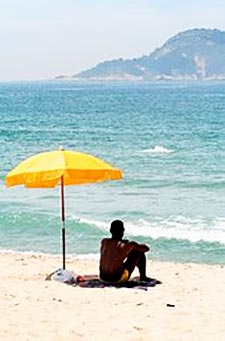The temperatures are beginning to rise as we are approaching the long days of summer which means making plans for outdoor activities, usually involving water, so be careful of sunburns. There is nothing more synonymous with summer than water-be it poolside, with water guns and sprinklers, at the beach or ideally on board a boat (or yacht) cruising in the ocean. Water is undoubtedly the best part of summer, but it’s also dangerous, and so is its summer sidekick, the sun. Even people that seemingly live on the water and are diligent about water safety are guilty of neglecting the basics of sun safety.
Summer is the season of fun and outdoor activities but we should all keep in mind that even on a rare June gloom cloudy day, up to 80% of the dangerous UV rays from the sun still make it through the clouds, meaning you can get burned just as easily. The sun can be relentless and burn you even if you’re not directly in it.
Protection from Sunburns Near Water
Reflection burns are also quite common, especially for those that enjoy doing things in and on the water. Reflection burns are also a danger for skiers and even concrete or sand has the ability to turn your fab day into a crab day, sunscreen isn’t for wearing only in the sun.
Even people that are disciplined in generously applying the appropriate amount of sunscreen, the eyelids and ears are two commonly forgotten regions with particularly sensitive and vulnerable skin.
Sunburns – The Bad News
According to the Skin Cancer Foundation a person’s risk for melanoma doubles if they have had more 5 sunburns.
Sunburns – The Good News
Using sunscreen daily reduces the skins aging process by as much as 24%. According to the American Skin Association wearing sunscreen is the single most important thing for healthy skin.
The EPA has a handy sunscreen guide that mentions the suns UV strength is at its peak between the hours of “10 a.m. and 4 p.m. during sunny summer days”, which means here in Southern California and those of us that enjoy the water should be extra vigilant and generous with sunscreen. Maybe someday it will be dispensed freely, like the hand sanitizer and the grocery store. The EPA’s advice is also to monitor your local UV index where you are geographically by checking your specific zip code.
Clothing companies such as REI, Patagonia and Coolibar make apparel that itself is UV protecting or shielding, the Coolibar Suntect Fabric claims to have a UPF of 50+ and blocks 98% of UVA/UVB rays, could be worth a try. REI’s website offers a detailed explanation of how sun protective clothing works and an explanation of a fairly new rating system called UPF, or Ultraviolet Protection Factor, which is used specifically in rating apparel.
Being sensibly safe in the sun doesn’t mean you have to become obsessive or paranoid about it and avoid going outside altogether. Common sense with regards to sun safety is pretty cheap, especially after you’ve been burned before you realize that using sunscreen isn’t that difficult (or expensive).
If you live near or are traveling to the coastline in search of cool ocean breezes, aboard a boat is the best way to truly enjoy and stretch out your summer days.
[callout font_size=”15px” style=”coolblue”]
The cure for anything is salt water: sweat, tears or the sea.”- Isak Dinesen
[/callout]


